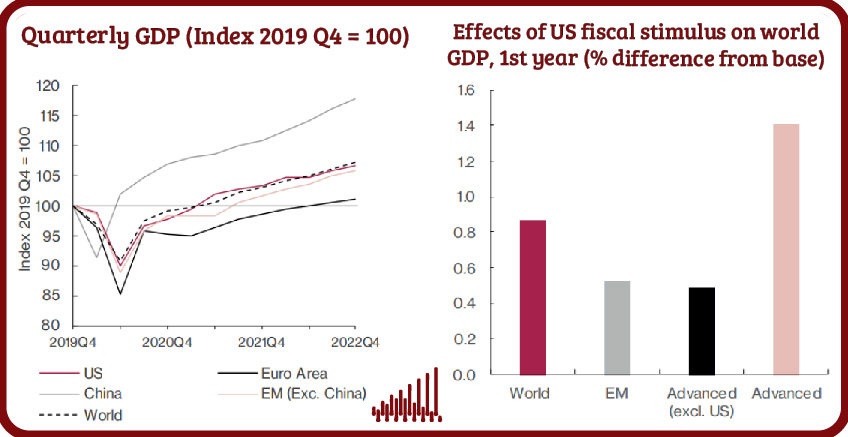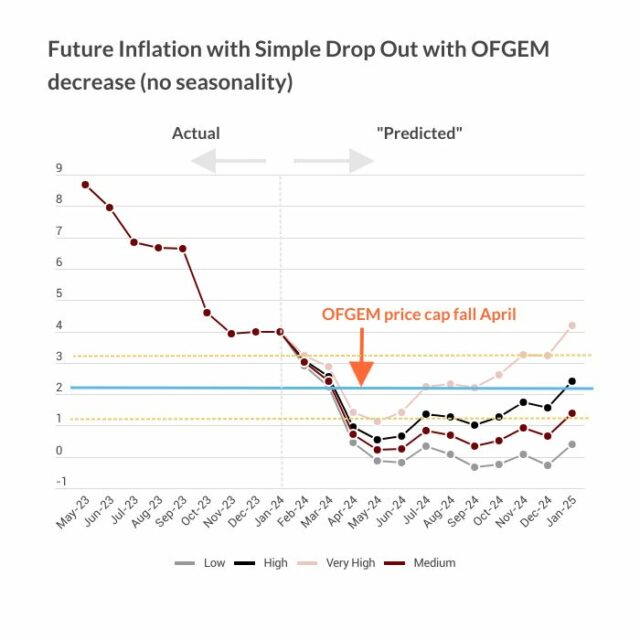Press Release: Global Economic Outlook – Vaccines and US fiscal boost raise global growth prospects

FOR IMMEDIATE RELEASE
- Global economic activity has rebounded from the sharp fall in the first half of last year. But the continuation and pace of the global recovery are highly dependent on the evolution of the virus and the coverage of vaccinations.
- In recent months, the rapid rollout of vaccination programmes has provided a boost to confidence and economic activity. The pace of vaccination has, however, been uneven across countries, with emerging economies running well behind advanced economies, creating an increased need for an international effort to ensure that vaccinations are widespread, enabling maximum benefits to be gained.
- Another important recent development has been the American Rescue Plan – a $1.9 trillion fiscal boost to the US economy worth about 9 per cent of US GDP. This stimulus will boost US and global GDP growth this year, as well as provide some support should there be retrograde steps due to the spread of the virus.
- Following these developments, we have raised our forecast for global GDP growth this year from 4½ per cent to 5½ per cent. For 2022, we now project GDP growth of 4¼ per cent (up from 3¾ per cent).
- The pace of economic recovery will differ across economies. GDP in the US is now expected to reach its pre-pandemic level this year, while GDP in the Euro Area is forecast to remain below its pre-pandemic level until late 2022. In contrast, GDP in China is already 8 per cent above its level at the end of 2019.
- The pandemic has led to GDP being lower than anticipated. We estimate that the pandemic will result in the level of global GDP being around $6½ trillion (about 4 per cent of GDP) lower in 2025 than our pre-pandemic expectation, with the cumulative loss of GDP up to 2025 amounting to around $36 trillion.
- One legacy from the pandemic has been higher public debt, with debt to GDP ratios in advanced economies having risen by around 15 – 20 percentage points, or by around $7 trillion. It does create a vulnerability to both higher interest rates and further adverse shocks that would require a response in the form of higher government borrowing.
Barry Naisbitt, NIESR’s Associate Research Director for Global Macroeconomics, said:
“Over the past three months the pace of vaccinations, the US fiscal stimulus, and the resilience of economic performance in the face of the renewed waves of the virus have boosted global growth prospects. After a 3¼ per cent fall last year, we now forecast that global GDP will increase by 5½ per cent this year. But even with the improvement in the short-term outlook, there remain many uncertainties. There are concerns around the global distribution of vaccines and also about potential vulnerabilities created by the considerable monetary and fiscal policy ‘firepower’ that has been used by countries over the past year. Policy rates close to the effective lower bound and higher public debt levels restrict the scope for much further monetary and fiscal stimulus should other adverse economic shocks occur.”
ENDS
——————————
Notes for editors:
Details of NIESR’s previous global economic forecast can be found here.
For a full copy of the world economic forecast or to arrange interviews and background briefings with our country specialists and senior researchers, please contact the NIESR Press Office: press [at] niesr.ac.uk / l.pieri [at] niesr.ac.uk / c.ridyard [at] niesr.ac.uk / 07930 544 631 / 07970 984913
For technical questions related to the forecast, please contact:
- Hande Küçük on h.kucuk [at] niesr.ac.uk
- Iana Liadze on i.liadze [at] niesr.ac.uk
- Barry Naisbitt on b.naisbitt [at] niesr.ac.uk
Further details of NIESR’s activities can be seen on http://www.niesr.ac.uk or by contacting enquiries [at] niesr.ac.uk Switchboard Telephone Number: +44 (0) 207 222 7665



















